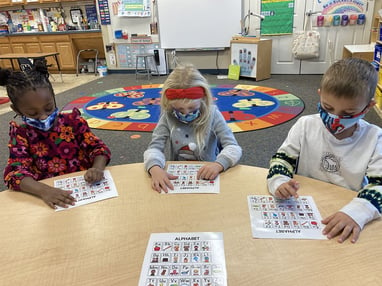If you have ever been to a child's birthday party, you know firsthand how different children are from each other. Imagine your five-year-old neighbor's Spider-Man-themed party. There may be games, food, cake, presents, and no matter how well all that is going, as soon as Spider-Man shows up, there is bound to be drama. Some children are going to be incredibly excited, some so scared they may start crying, some may not know who Spider-Man even is, and some will become instantly shy and want to hide behind their parent's legs.
Now imagine those same children in their kindergarten classroom. They may be equally as different when it comes to learning how to read. Differentiated instruction is the act of teaching individuals differently based on their needs, their interests, their readiness, and their strengths. The goal to have everyone learn how to read remains the same but how that happens depends on who the children in the class are.
Children are unique, their learning opportunities should be too
Each kindergarten classroom is made up of unique children who may:
- speak different languages
- have different learning styles
- experience different socioeconomic and cultural backgrounds
- widely differ in learning exceptionalities.
What’s more, their interests are bound to be varied as will their personalities. The way they learn best is just as diverse as they are.
To implement differentiated instruction, teachers must get to know their students well. Then they tailor instruction to meet the needs of their students. For instance, during reading class, they may meet with small groups of students or even individually. The teacher chooses books that are on the student's interest and instructional level then plans activities to support student learning based on their current abilities: 
- Students learning to decode short three-letter words practice writing them in shaving cream on the table.
- Another group may have roles in a reader's theater to increase their fluency and expression.
- While still another group is completing a story map to show the setting, characters, and problem of the story they read.
- Building words with LEGOS with the letters written on them.
- Writing the sight words with white crayons and then using watercolors to paint over them.
- Playing Jenga with their sight words written on the blocks.
- Walking around the room with clipboards in search of the hidden sight words and recording them on their papers.
Even though the activities are varied, the goal of practicing to identify and/or write their sight words is happening in each one.
differentiation strengthens learning
As you can imagine, orchestrating all this is not easy. Teachers must be masters at multitasking, organizing, and planning, not to mention having solid classroom management. When students are interested, they become invested, and when they feel successful they take pride in their work. All this movement and activity may actually be easier for the teacher to manage because the students are liking what they are doing so they are more likely to stay on task.
Differentiated instruction can be done at all grade levels and all subjects. In a third-grade classroom, it may mean that an introverted student may write an essay about a novel while an extroverted one may give an oral presentation. In math class, some students are learning to solve word problems using manipulatives, some drawing a bar model, while others are using pencil and paper in a more traditional-looking way.
Schools like Sanford that encourage and support teachers to use differentiated instruction in their classrooms are setting their students up for success. It is certainly not easy, but it is important and should be a part of every classroom.









